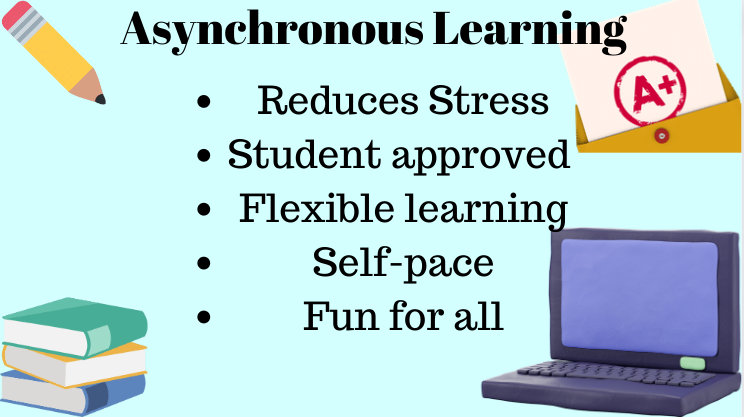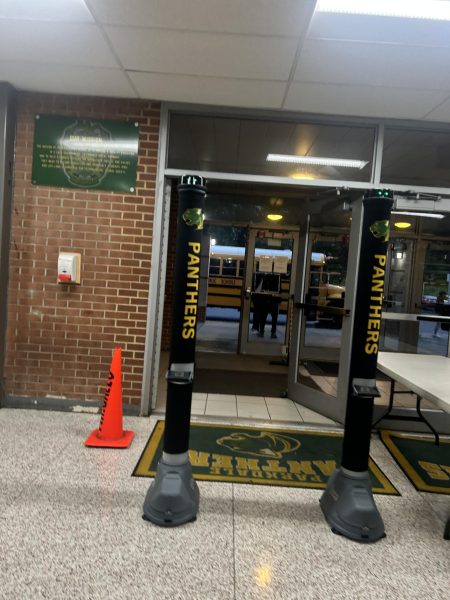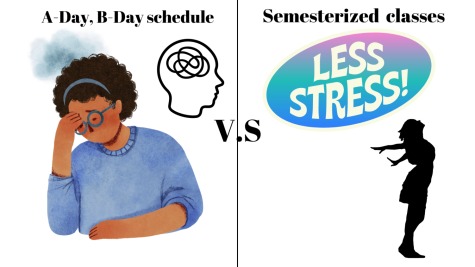Asynchronous Learning; Is it more beneficial than what people think?
Throughout the school year, students and teachers have become increasingly exhausted due to the overworking environment in school causing stress; with asynchronous learning, stress can be reduced. An Asynchronous day for students and staff would allow them to catch up on work and care for their mental health.
According to the e-Learning platform iSpring.com, “asynchronous learning is a type of training in which students access learning content, take assessments, and communicate at their own pace.” With self-paced learning, it could improve students’ grades allowing them to complete assignments at their own pace along with getting grades while being at home.
When it comes to teachers, it will allow them to catch up on grading. According to learner.com, Michael Brown says, “The average student-to-faculty ratio in the U.S. K-12 public schools have 15.3 students per teacher”, However, some teachers have over 20 students per class, ranging from 100-150 total and possibly even more. With this amount of students, it could affect a teacher’s ability to put grades in, in the short amount of time and amount of work per student they have to grade.
Asynchronous learning would give them the advantage of getting caught up on grades and giving students a short assignment to count for attendance and staged for the grade book.
This wouldn’t be anything new for PGCPS schools. Throughout the years 2020-2021, students and teachers were faced with virtual learning due to Covid-19, and in those days of virtual, students and teachers were given one day out of the week to do work on their own without having to log into zoom for a lesson.
Asynchronous days would be beneficial for students’ mental health; according to Scientific American, Tyler Black states, “Unlike in adults, suicide risk among children is lowest during the summer and higher during the school year. Understanding these patterns can help prevent and treat suicidality.” By allowing students to have one day out of the week. It could reduce the rates of suicide in the youth community.
Asynchronous days would be beneficial for teachers allowing them to dedicate a day out of the whole week they work to catch up on grades and create new lesson plans if needed. Along with reducing stress levels, according to Flexjobs.com, “working remotely generally allows for a quieter, more subdued atmosphere, reducing the likelihood of sensory overload and the associated feelings of stress and anxiety”
One challenge that would be faced is having the risk of more days being added to our school year. Given the data from the two asynchronous days we’ve had before, we can see the scores of students who showed attendance. Every teacher is different, and some allow attendance to be taken by completing an assignment in the time the class is being taken.
Many teachers have been affected by covid-19 during weekly asynchronous learning, many teachers benefited, and some didn’t. “It was very helpful. It gave me the opportunity to work with individual students one on one that needed help” said Science teacher Dr.Minkin. This goes to show teacher benefit in easy that also benefit the students, allowing both parts to shine equally while learning and teaching. Many students loved asynchronous learning, giving them an opportunity. “To do self-studying making them more independent and learning how to self-advocate for themselves as they would do in the real world.” Said Junior Samantha Lazaro. Throughout the upcoming years, one goal is to expand upon the idea of asynchronous learning in order to benefit students and teachers.
Your donation will support the student journalists of Parkdale High School. Your contribution will allow us to cover our annual website hosting costs and publish some printed editions, as well.

Above is Katherine Herrera. She is currently a junior graduating in 2024. This is her first year on staff; she was first placed in journalism, later...








Samiah • Mar 29, 2023 at 4:30 pm
Asynchronous helps a lot with many students who is affected by anxiety etc. working remotely can be relaxing and peaceful rather than going to school.
Cindy Gonzalez Lopez • Mar 27, 2023 at 7:10 am
I really agree with this article because I feel that it helps everyone to catch up and try to not but more stressed. Overall I feel like sometimes it might be useful to have a couple more asynchronous days.
Miguel • Mar 24, 2023 at 9:21 am
I think that asynchronous learning is something good with many benefits for everyone, it is interesting how you’ll address it by informing more about how it works.